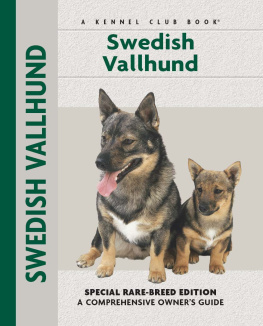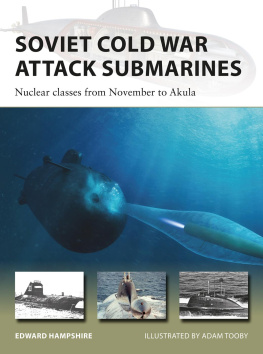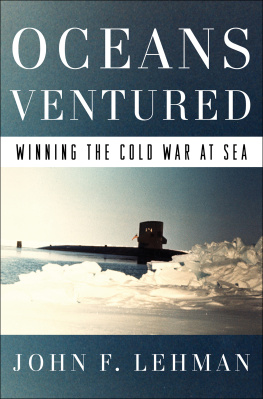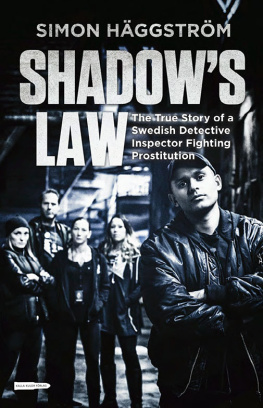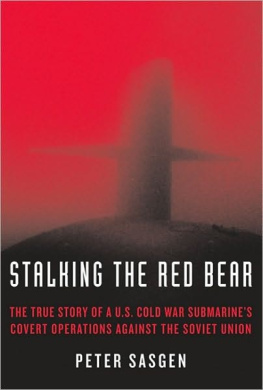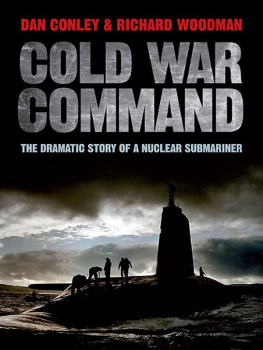Pelle Neroth Taylor - Ghost Hunt, NATO And Sweden: The true Cold War story of the mystery submarines in Swedish Waters
Here you can read online Pelle Neroth Taylor - Ghost Hunt, NATO And Sweden: The true Cold War story of the mystery submarines in Swedish Waters full text of the book (entire story) in english for free. Download pdf and epub, get meaning, cover and reviews about this ebook. year: 2015, genre: History. Description of the work, (preface) as well as reviews are available. Best literature library LitArk.com created for fans of good reading and offers a wide selection of genres:
Romance novel
Science fiction
Adventure
Detective
Science
History
Home and family
Prose
Art
Politics
Computer
Non-fiction
Religion
Business
Children
Humor
Choose a favorite category and find really read worthwhile books. Enjoy immersion in the world of imagination, feel the emotions of the characters or learn something new for yourself, make an fascinating discovery.

- Book:Ghost Hunt, NATO And Sweden: The true Cold War story of the mystery submarines in Swedish Waters
- Author:
- Genre:
- Year:2015
- Rating:3 / 5
- Favourites:Add to favourites
- Your mark:
- 60
- 1
- 2
- 3
- 4
- 5
Ghost Hunt, NATO And Sweden: The true Cold War story of the mystery submarines in Swedish Waters: summary, description and annotation
We offer to read an annotation, description, summary or preface (depends on what the author of the book "Ghost Hunt, NATO And Sweden: The true Cold War story of the mystery submarines in Swedish Waters" wrote himself). If you haven't found the necessary information about the book — write in the comments, we will try to find it.
Ghost Hunt, NATO And Sweden: The true Cold War story of the mystery submarines in Swedish Waters — read online for free the complete book (whole text) full work
Below is the text of the book, divided by pages. System saving the place of the last page read, allows you to conveniently read the book "Ghost Hunt, NATO And Sweden: The true Cold War story of the mystery submarines in Swedish Waters" online for free, without having to search again every time where you left off. Put a bookmark, and you can go to the page where you finished reading at any time.
Font size:
Interval:
Bookmark:
Ghost hunt: NATO and Sweden by Pelle Neroth Taylor
The true Cold War story of the ghost submarines in Swedish waters
ContentS
Margaret Thatcher and the Spies
This is a book about one of the greatest mysteries of the Cold War. The submarine intrusions that occurred in Swedish waters from 1982 onwards, for several years. They were like ghosts: there were sporadic sightings of conning towers, and registers of sonar echoes, along the indented Baltic coast of this politically neutral, pacifist country, but no submarine was ever brought to the surface.
They were nevertheless named as Soviet, by public, media, the political opposition and, significantly the Swedish Navy. Since the prime minister at the time, Olof Palme, was engaged in trying to bring the Soviet Union in from the diplomatic cold, his political reputation was severely damaged by the intrusions. Palme initially believed the Navy when it told him the submarines were Soviet. Later, he was not so sure.
Palme was trying to be a broker between East and West at a time when relations between the two superpower blocs, led by the Soviet Union and the United States. had broken down completely. This breakdown in relations between East and West can be traced to two events that took place within weeks of each other three years before the first submarine intrusions.
The first event was the Soviet invasion of Afghanistan on Christmas Day 1979. The second event took place two weeks earlier on 12 December 1979 when NATOs defence and foreign ministers took a landmark decision that was designed to unify the alliance, but which also provoked strong counter reactions in the Soviet Union as well as among West European publics, where the move was extremely unpopular.
The event was the signing of the dual track decision which linked deployments of US Cruise and Pershing nuclear missile for negotiations with the Soviet Union over the future of those forces, as well as their Soviet equivalents, the SS-20 missiles. The decision foresaw the deployment in Europe of 572 mobile American middle range nuclear-armed missiles in four years time, if negotiations with the Soviets to cut back their recently installed SS-20s failed.
NATO leaders claimed the Soviet decision to introduce the SS-20s upset the nuclear balance, and saw their dual track decision as a response to Soviet moves; the Soviets, for their part, saw the NATO plan as an escalation of the arms race.
These two events the invasion of Afghanistan and the NATO dual track decision - killed the 1970s period of political calm, or dtente, between East and West stone-dead and marked the beginning of what is known as the Second Cold War.
It was this detente that Palme wished to return to. The icy and tense period of the Second Cold War lasted for six years until it slowly started winding down in the late 1980s with the democracy reforms President Gorbachev introduced into Eastern Europe, partly - and not many people know this inspired by Olof Palme. By then, Olof Palme had been murdered in a Stockholm street, one icy winters evening while walking home from the cinema. The murder is still unresolved; but the atmosphere of anxiety in Sweden prompted by the intrusions helped make Palme very unpopular, even hated, among sections of the public.
The two events of December 1979 that launched the Second Cold War were coloured by the extreme distrust with which Britains new prime minister, Margaret Thatcher, felt for everything Soviet.
As early as her Iron Lady speech of 1976, Thatcher had shown her suspicions of dtente then well under way. According to her official biographer Charles Moore, she was convinced the Soviets were working hard, both politically and militarily, to achieve world mastery and that the West should not bargain with them unless it could bargain from strength. Moore adds: She also believed that the disunity of the NATO alliance was the prize which the Soviet Union sought most.
Thatcher distrusted the Foreign Office, which she saw as being too institutionally soft on the Soviets. So, even before her election to the top job in May 1979, she surrounded herself with advisors on the Soviet Union drawn from academia and journalism who had pretty robust views on the country. She called them her irregulars, just as Churchill had dubbed his informal coterie of advisers. The most important of these was Robert Conquest, one of the most anti-Soviet historians of his time. He had written detailed and well regarded accounts of the wickedness of the Stalin regime though he was less well read up on the far less brutal, stagnated Soviet Union of the Brezhnev era.
A poet and practical joker, he was also one of the novelist Kingsley Amiss closest friends. For an important speech on foreign policy in 1978, she drew extensively on one of his not yet published manuscripts. Writing to thank him later, she told Conquest that your book and draft provided the meat of the text in the places where it really mattered. When the book, dealing with the Soviet Union, was published in 1979 it was called Present Danger. Conquest dedicated the book to Mrs Thatcher. Conquest predicted that the upcoming years would be a period of enormous danger and said that the most important thing for the West was to hold its nerve. Conquest thought Carter was a weak link in the life-and-death struggle against the USSR, a point he put across to Thatcher. She wrote to Conquest that she felt the real urge to stiffen up Washington, underlining the statement in her trademark green ink.
Conquest feared that the Soviets might contrive military incidents in West Germany which would result in a ceasefire which the Soviets would exploit to their advantage and end up with their armies on the Rhine. Conquest thought the American understanding of the Soviet threat was poor. According to Moore, who has had access to Thatchers archives, much of it previously unpublished, Conquest wrote approvingly to her after her green ink remarks: The way you keep alerting the West to reality is spellbinding and inspiriting.
Another adviser to Margaret Thatcher was Brian Crozier, who, as one obituary put it when he died recently at the age of 94, was a journalist and prolific author of hardline convictions.
Claiming to be the KGBs enemy number one, Crozier always said he recognised the evil nature of the Soviet regime earlier than most, and spent the latter part of his career exposing its evils to what he saw as western apologists for the cause. (Crozier himself had flirted with Communism in his youth.) Australian-born, the London-based Crozier was part of a network of academics, journalists and right wing Conservative MPs who, throughout the seventies, had been worried about Communist threat abroad and the decline of Britain at home. Journalist Paul Routledge writes in his book about Thatchers mentor, MP Airey Neave, who was a key figure in this network and the man who, more than anyone, ensured Thatchers rise to power: From the recesses of the security services, from the upper reaches of the City, from Londons clubland and from the right of the Conservative party came volunteers eager to fight the good fight [against Communism].
One cannot explain Thatchers rise and the fact that someone on the right of British politics, as she undoubtedly was, became party leader in a Conservative party that was then very centrist and moderate without explaining the importance of these powerful, plotting men in the shadows, one of whom, Neave, as said, played a key role in her accession to power. In the wake of the Conservatives election defeat under Edward Heath in 1974, she was the underdog challenger expected to win by hardly anyone. And yet she did.
Airey Neave was a Tory MP and war hero: Margaret Thatchers biggest early supporter and ultimately her king maker in 1975. Captured as a young soldier in France in 1940, Neave spent two years at the notorious German prison at Colditz, from which he escaped in 1942. When he arrived in Switzerland, he was brought to the attention of British intelligence for this feat and spirited back to Britain to be part of MI9, the escape and evasion organisation for Allied pilots and servicemen. Routledge writes that MI9 was a wholly owned subsidiary of MI6, the Secret Intelligence Service.
Next pageFont size:
Interval:
Bookmark:
Similar books «Ghost Hunt, NATO And Sweden: The true Cold War story of the mystery submarines in Swedish Waters»
Look at similar books to Ghost Hunt, NATO And Sweden: The true Cold War story of the mystery submarines in Swedish Waters. We have selected literature similar in name and meaning in the hope of providing readers with more options to find new, interesting, not yet read works.
Discussion, reviews of the book Ghost Hunt, NATO And Sweden: The true Cold War story of the mystery submarines in Swedish Waters and just readers' own opinions. Leave your comments, write what you think about the work, its meaning or the main characters. Specify what exactly you liked and what you didn't like, and why you think so.


